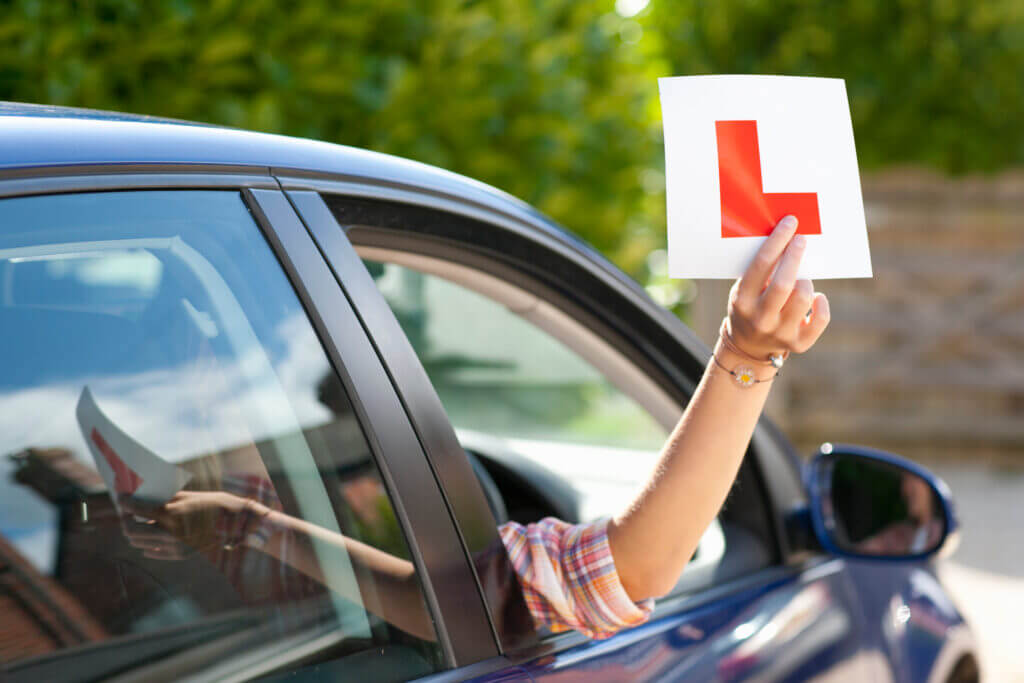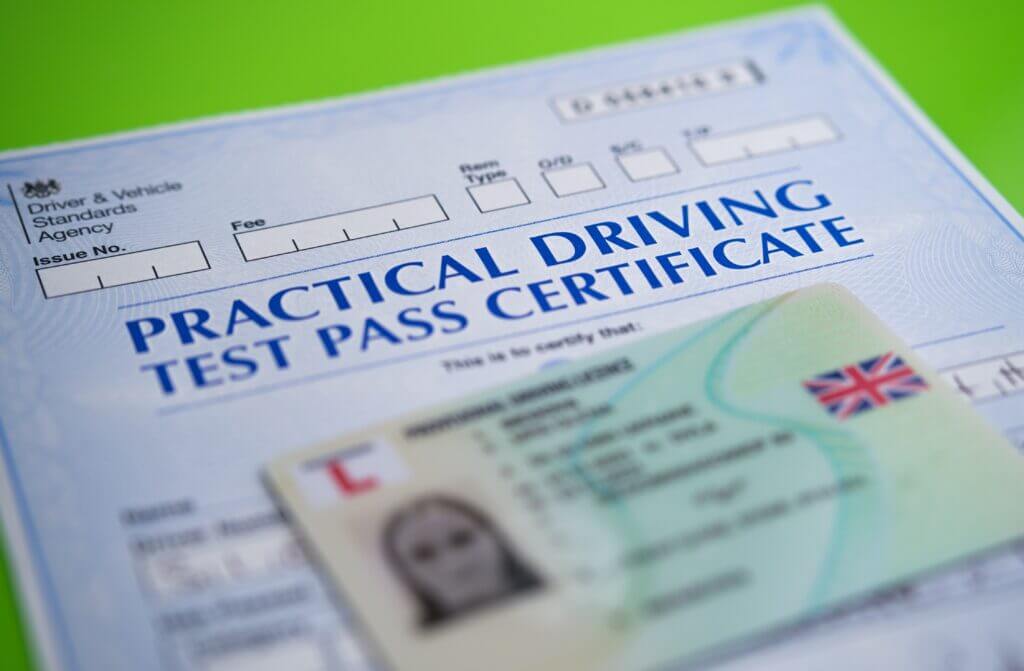At a glance
- For your theory exam you’ll be asked 50 questions of a possible 1,000! Don’t worry though, most of them are multiple choice
- The test is split into two parts; multiple choice and a hazard perception test
- Read on to find out how you can maximise your chances of passing your theory test
- Discover what to do if you don’t pass your test the first time round
Passing your theory test is a key step in getting your driver’s licence. It shows you have a good grasp of the rules of the road, understand the meaning of road signs and markings, and can also spot hazards. Once you’ve passed your theory test, you can then book a practical driving test.
Like with any exam, the best way to pass the driving theory test is preparation. During the test, you’ll need to answer 50 questions out of a possible 1,000 – and it can feel a little daunting to absorb all this information. But with a little prep it’s totally doable. The main part of the theory test is a multiple choice exam, so there’s no difficult calculations or writing involved.
At Motors, we’re here to help you get through it. In this blog, you’ll learn more about the exam, as well as our 15 best ways to pass the theory test.
Overview of the UK driving theory test
The driving theory test is split into two parts. The first is a multiple choice exam which tests your knowledge of the rules of the road. Then there’s a hazard perception test, where you watch driving videos on a computer, and click on the screen when you identify a hazard.
In the multiple choice exam, you will have 57 minutes to answer 50 questions. These are drawn from a list of about 1,000 questions and the testing software assigns them to you at random. To pass the multiple choice section, you need to get at least 43 of the questions right.
In the hazard perception test, you will watch 14 videos, lasting 20 minutes in total. In each of the videos, at least one ‘developing hazard’ will start to happen (in one of the videos there are two hazards). Hazards could be things like pedestrians walking into the road or cars pulling out in front of you. You have to click on the screen when you believe a hazard is developing, and you score more points the sooner you click (you have to score at least 44 out of 75 to pass).
You can have a three minute break between each test, or go straight from the theory to the hazard test.
15 best ways to pass the theory test
There is no easy way to pass the driving theory test – you will need to put the effort in. But with a bit of preparation and planning, the process becomes a lot less challenging. Here are our 15 tips on the best ways to learn the theory test in the UK.
1. Book your test with enough time to spare
Perhaps the best way to pass the driving theory test is to give yourself enough time to learn the theory before doing the test itself.
Ideally, you’d want to give yourself at least three months. That leaves plenty of time to familiarise yourself with the rules of the road.
You know yourself best and how you like to study – some people can learn the rules of the road in less time. All the same, try to give yourself as much time as you need, and avoid cramming the night before!
2. Get all the books and resources you need
The best way to learn the theory test in the UK is to read the three books which the country’s driving rules are based on. These are:
You can buy hard copies of these books – get them online or from any high street book shop. You can also pick them up for free at the library, or download them as PDF documents from various websites (just make sure they’re the latest edition).
3. Put in the legwork
As we’ve said, there’s no easy way to pass the theory test. You’ll need to dedicate enough time to familiarise yourself with the rules of the road, and read the books mentioned above from cover to cover.
Unfortunately, there aren’t any shortcuts here. The questions in your test will be drawn from over 1,000 possible questions that change – so you’ll need a comprehensive understanding of the topic. This is hard work, but it will set you in good stead for once you get your licence – you’ll have a deeper knowledge of how to drive safely.
4. Create and follow a revision timetable
One of the best ways to pass the theory test is to create a revision timetable. Once you’ve got a test date booked, work backwards from that date and set a timetable to learn, revise and do practice tests.
You don’t need to spend hours every day on this, but it’s helpful to block out a few hours each week where you work through the books.
In the first few weeks of your revision timetable, you’ll want to focus on simply learning the theory. Once it gets to the last couple of weeks before the test itself, begin revising what you’ve learnt. Then, in the last week or so, do a few practice tests.
5. Download apps
There are now several theory test apps available where you can learn the rules of the road and do some tests. The good thing about apps is that you can read theory and do tests whenever you have a free moment.
One good option is the DVSA’s own theory test app (download it here for Android or here for iOS). This is the official app and it costs £4.99.
You could also try other apps such as the UK Driving Theory Test app, or the Driving Test Success app – both cost £4.99 (this list isn’t exhaustive and we don’t necessarily endorse any of these apps).

6. Get out into the real world
While it’s great to read books or use digital resources, nothing beats real world experience.
Each time you’re out driving or are a passenger, look at what’s happening around you – are there road markings you don’t recognise? Signs that you don’t understand? Can you spot any developing hazards?
This helps you connect your learning to the real world, and reinforce it in your mind.
7. Consider getting a tutor
You might find it helpful to work with a theory test tutor – you can find various companies doing this online. Some people can get a bit of a mental block with doing this kind of test or find the information from their books isn’t being absorbed. So, having a couple of sessions with a tutor can really help with your confidence, meaning you’ll feel calmer going into the exams.
8. Prepare for the hazard perception test
The hazard perception test is very different to the theory test – and it’s a little harder to revise for.
Still, there are several useful resources you can use. Your local library should stock DVDs or even resources on the library’s own computers for doing hazard perception style tests.
There are also numerous hazard perception tests available online. The DVSA website has a few you can try out for free. There are also several websites where you can pay to do these tests.
9. Learn to ace multiple choice questions
The driver theory test is a multiple choice exam – usually with four options with one correct answer (but sometimes more). Multiple choice exams can be surprisingly difficult. Here are a few tips for how to pass your theory test a little easier:
- Read the question carefully. Sometimes, multiple choice questions are asking different things to what you might initially think. So, spend enough time reading the question in detail, instead of instantly clicking on the most obvious looking box.
- Try to answer all the questions. It sounds obvious, but you’d be surprised how many people don’t answer all the questions in the exam. You will increase your chances of passing the theory test if you answer all the questions.
- Avoid obsessing over answers. Sometimes you will come across questions that are confusing. Try to avoid obsessing over these ones – answer to the best of your ability and move on – there’s no point in wasting all your time on questions you’re not sure about.
- Narrow down your options. If you’re not 100% sure about the answer to a question, narrow it down by eliminating those that you’re sure are wrong. This could leave you with just two answers – it then becomes a 50/50 chance if you are forced to guess (rather than one in four).
- Manage your time. Remember you have 57 minutes to answer 50 questions. This means you’ve got just over one minute per question. A good tactic is to spend no more than one minute per question, then use the spare seven minutes at the end to go back over your answers and look again at any questions you had doubts about.
10. Use the flagging option
When you’re doing your theory test, you might come across questions that you’re unsure about. The test allows you to flag these questions and come back later. Using this option is one of the best ways to pass the theory test because it saves you from getting stuck on tricky questions.
11. Do plenty of practice tests
There are several resources online or in apps where you can do practice tests. While they won’t ask the exact questions which will appear in the theory test, they’ll help you get used to how the questions are asked and the different formats used.

12. Get prepared on the day
Most people find exams stressful, but there are several things you can do to feel more confident on the day. Try to get an early night before the exam itself, and eat a light breakfast – this way you’ll feel ready and mentally prepared.
It’s also sensible to arrive at the theory test centre with at least 20 minutes to spare. That means that you can get registered properly, won’t feel rushed, and can do any last minute revision or use the bathroom.
13. Don’t forget your provisional driver’s licence
To be able to sit the theory test, you will need to bring along your provisional driver’s licence. Make sure you keep this somewhere safe such as in your wallet or purse and double check you’ve got it with you the day of the test.
14. Take a breather
You’re allowed to take a three-minute break between the theory test and the hazard perception test. Use this time wisely. You might be feeling stressed, anxious, or have a bit of adrenaline going through your system. Try to use these three minutes to breathe slowly, reset your mind, and get mentally prepared for the second part of the exam.
15. If you don’t pass the test
It is of course disappointing to not pass your driver’s theory test. Remember, though, that less than half of people pass this test the first time round, so you’re not alone (according to statistics from Driving Test Success). At the end of the test, you’ll receive a letter explaining which questions you slipped up on, so you can use this information to prepare for your next attempt.
By following our guide to the best ways to pass the driving theory test, you can improve your chances of getting your licence. Good luck!


